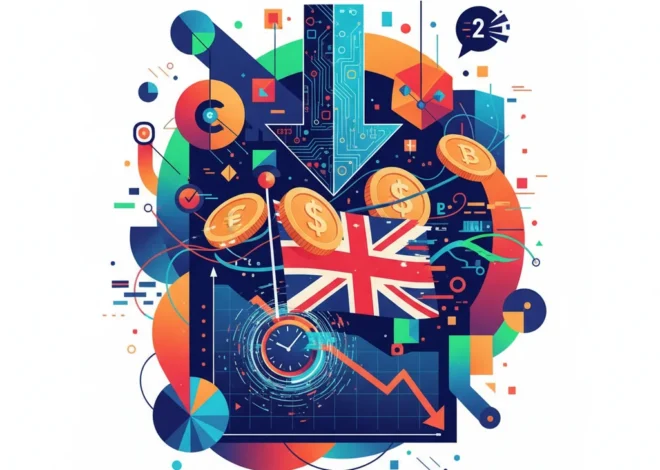
From Local Advice to Global Markets: Decoding the Economic Signals Behind Your Heating Bill
On the 26th of November, a seemingly routine event will take place at the Centenary Methodist Church in Boston, UK. The Boston Borough Council will hold a drop-in session to offer residents advice on heating their homes (source). On the surface, this is a commendable local initiative—a community-focused response to a practical problem. Yet, viewed through a wider lens, this small gathering is a powerful microcosm of the immense, interconnected forces shaping our global economy. The need for such a session isn’t just about insulation and thermostats; it’s a direct consequence of volatile energy markets, strategic central banking decisions, and the relentless march of financial technology.
This single event serves as a canary in the coal mine, signaling deep-seated tremors across the landscape of international finance, investing, and economics. To truly understand why a local council is advising on heating costs, we must zoom out from the church hall in Boston and pan across the global stock market, the policy-making chambers of central banks, and the innovative labs of fintech and blockchain pioneers. This article will deconstruct the journey from a household heating bill to the complex world of macroeconomic policy and high-tech financial solutions, revealing how your personal finances are inextricably linked to the global economic engine.
The Macroeconomic Furnace: Why Your Utility Bill is a Global Affair
The primary driver behind the need for heating advice is, of course, the dramatic surge in energy prices over the past few years. This wasn’t a localized phenomenon but a global shockwave with multiple epicenters. The post-pandemic economic reopening created a surge in demand that strained supply chains, while geopolitical conflicts, particularly in Eastern Europe, weaponized energy supplies and sent shockwaves through the natural gas and oil markets. According to the UK’s House of Commons Library, wholesale gas prices in 2022 reached levels more than 15 times their pre-2021 average at their peak.
This price explosion is a textbook lesson in economics, demonstrating how shocks in the supply of a critical commodity can trigger widespread inflation. For businesses, higher energy costs translate to increased operational expenses, which are often passed on to consumers. For households, it means a direct and painful squeeze on disposable income. This isn’t just a matter of budgeting; it fundamentally alters consumer behavior, dampens economic growth, and becomes a primary concern for governments and central banks. The global economy, in essence, was running a fever, and energy was the source of the infection.
The Suite Spot: How Miami's Luxury Hotels Reveal the City's Rise as a Global Finance Hub
The Central Banking Thermostat: Monetary Policy in an Energy Crisis
When inflation runs hot, the world turns its eyes to central banks. Institutions like the Bank of England, the U.S. Federal Reserve, and the European Central Bank are tasked with maintaining price stability. Their primary tool is the interest rate—a powerful lever that can cool down an overheating economy. By raising interest rates, central banks make borrowing more expensive. This discourages spending and investment by both consumers and businesses, reducing overall demand and, in theory, pulling inflation back down to its target (typically around 2%).
The response to the energy-driven inflation was swift and aggressive. The Bank of England, for instance, raised its base rate from a historic low of 0.1% in late 2021 to 5.25% by August 2023 in a series of consecutive hikes. This had profound implications for the entire banking and finance sector. Mortgages became more expensive, corporate debt servicing costs rose, and the risk of a recession loomed large. This is the difficult tightrope that central bankers must walk: combat inflation without crashing the economy. The decisions made in these boardrooms directly impact the financial pressure felt by the very residents attending the advice session in Boston.
Investing in a Volatile Climate: Navigating the Energy-Driven Stock Market
For investors, business leaders, and finance professionals, this environment presents both immense challenges and unique opportunities. A volatile economy driven by energy prices reshuffles the deck on the stock market. Sectors react in vastly different ways:
- Energy Sector: Companies involved in oil and gas extraction, refining, and distribution saw record profits. Investing in these stocks or in energy-focused Exchange Traded Funds (ETFs) became a popular strategy to hedge against inflation.
- Consumer Discretionary: Companies selling non-essential goods and services (e.g., travel, luxury goods, high-end electronics) often suffer as household budgets tighten.
- Utilities and Industrials: These sectors face a double-edged sword. While some can pass on higher costs, others are squeezed by rising energy expenses, impacting their margins.
Sophisticated trading strategies also came to the forefront. Trading futures contracts on commodities like Brent crude or natural gas allowed institutional investors to speculate on or hedge against future price movements. The key takeaway for anyone involved in investing is that macroeconomic indicators, once the domain of economists, are now essential reading for stock market participants. Understanding the global energy landscape is no longer optional; it’s fundamental to sound investment decision-making.
Below is a simplified comparison of sector performance in a high-energy-inflation environment.
| Economic Sector | Typical Impact of High Energy Prices | Investment Consideration |
|---|---|---|
| Energy (Oil & Gas) | Increased Revenue & Profits | Potential for high returns, but exposed to price volatility and regulatory risk. |
| Renewable Energy | Increased long-term demand as alternatives become more attractive. | Growth potential, but often requires significant capital investment and is sensitive to interest rates. |
| Consumer Discretionary | Decreased Consumer Spending & Lower Margins | Generally defensive or underweight positioning is favored. Look for companies with strong brand loyalty. |
| Airlines & Transportation | Dramatically Increased Fuel Costs & Squeezed Profits | High-risk sector; performance is heavily tied to the ability to hedge fuel costs. |
The Hidden Inflation in Your Jewelry Box: How Record Gold Prices Are Redefining Luxury
The Fintech Frontier: Technological Solutions for Financial Resilience
While macroeconomic policy and stock market trading operate at a high level, the field of financial technology (fintech) is providing ground-level solutions to the problems faced by households. The energy crisis has accelerated innovation in personal finance, creating tools that empower individuals to manage their money more effectively in a volatile world.
Several key areas of fintech have seen significant growth:
- AI-Powered Budgeting Apps: Modern fintech apps now go beyond simple expense tracking. They use machine learning to analyze spending patterns, predict future utility bills with greater accuracy, and suggest personalized ways to save.
- “Green Finance” Platforms: A new wave of financial technology companies is focused on funding energy-efficient home improvements. They offer specialized loans—often with preferential rates—for installing solar panels, heat pumps, or better insulation, directly addressing the root cause of high heating bills.
- Automated Savings & Bill Management: Some platforms allow users to automatically round up purchases to the nearest dollar and sweep the difference into a dedicated “utility bill” fund. Others offer services to negotiate with providers on the user’s behalf to find better rates.
This fusion of finance and technology provides a crucial layer of defense for consumers. It democratizes access to sophisticated financial tools, helping people build resilience from the bottom up, complementing the top-down approach of government and central banking.
The Blockchain Boiler Room: A Decentralized Future for Energy?
Looking further ahead, emerging technologies like blockchain present a radical reimagining of our energy infrastructure and its financing. While still in its early stages, blockchain technology offers potential solutions to the core issues of centralization and opacity that plague current energy markets.
Consider these future-forward applications:
- Peer-to-Peer (P2P) Energy Trading: Imagine a future where a homeowner with solar panels can sell their excess energy directly to their neighbor via a blockchain-based platform. This decentralized grid could reduce reliance on large utility companies, create more resilient local energy networks, and allow consumers to become active participants in the market.
- Tokenization of Energy Assets: A large-scale solar or wind farm could be “tokenized,” with its ownership represented by digital tokens on a blockchain. This would allow smaller investors to buy fractional ownership, democratizing investment in renewable energy projects and unlocking new pools of capital for the green transition.
- Transparent Carbon Credits: Blockchain can create an immutable and transparent ledger for carbon credits, combating fraud and “double counting.” This would make carbon markets more efficient and trustworthy, encouraging more investment in projects that reduce emissions.
The table below contrasts the traditional energy finance model with a potential blockchain-enabled future.
| Feature | Traditional Energy Finance | Blockchain-Based Energy Finance |
|---|---|---|
| Market Structure | Centralized (dominated by large utilities and corporations) | Decentralized (enabling peer-to-peer transactions) |
| Investment Access | Limited to accredited investors and institutions | Democratized through tokenization and fractional ownership |
| Transparency | Often opaque, with complex pricing structures | Radically transparent via a public, immutable ledger |
| Transaction Speed | Slow, involving multiple intermediaries | Near-instantaneous, with automated smart contracts |
While the widespread adoption of these blockchain solutions is still on the horizon, they represent a profound shift in thinking. They aim to tackle the systemic vulnerabilities that lead to price shocks, offering a future where the energy economy is more distributed, efficient, and resilient.
Conclusion: Connecting the Dots from Boston to the Blockchain
The drop-in session at Centenary Methodist Church is more than just a local event. It is a powerful symbol—a single data point that reveals the far-reaching impact of global economic, financial, and technological trends on our daily lives. The journey from a chilly home in a UK town to the trading floors of the stock market, the policy debates within central banks, and the innovative potential of fintech and blockchain is a direct one.
Understanding these connections is no longer an academic exercise; it is a practical necessity for informed citizens, savvy investors, and forward-thinking business leaders. The challenges posed by energy volatility require a multi-layered response, from practical local advice to sophisticated global investment strategies and transformative technological innovation. By appreciating the intricate web that links them all, we can better navigate the complexities of the modern economy and build a more resilient financial future for everyone.


